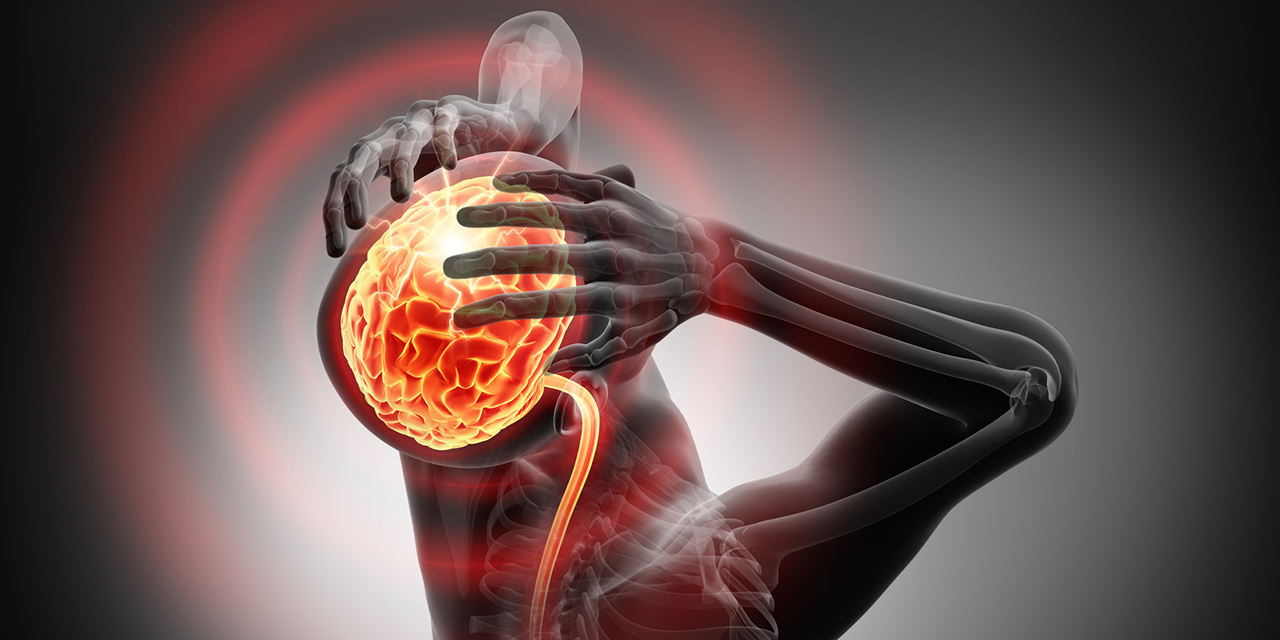Cluster Headache

Sad woman hug her knee,nobody
Clusters headaches are amongst the most severe kind of pain known to mankind. These headaches are called cluster headaches because they tend to cluster in cyclical patterns during certain times of the year in the absence of attacks for months or sometimes-even years.
The pain
Tends to recur in cycles at the same time throughout the year
Lasts from 2 weeks to 3 months
Is severe, very severe or unbearable
Described as being cut with a knife, burning, perforating, carving, pushing or pulling the orbits
The pain starts abruptly, lasts from 15 min to 3 hours, and then quickly resolves; it can be seen several times a day or several times a week during cluster times.
Pain is felt unilaterally in the eye area and temples, and may be reflected in the gums, cheeks, forehead and neck.
The headache may cause redness and tearing of the eyes, nasal congestion, stuffiness, nasal discharge, sweating of the forehead and face, constriction of the pupils and/or edema/drooping of the eyelids.
Unlike migraine, where the migraine sufferers want to remain immobile in a cool and dark place; the cluster headache patients cannot stay still and constantly move; some patients even hit their heads on the wall, while others punch themselves.
We still do not know the exact reason causing these headaches. Pain is seen at certain times of the year because of the influence of the hypothalamus gland, which regulates the biorhythm of the body; the internal clock. Trigeminal nerve involvement (which provides sensation of the face) also contributes to the pain. Another factor that has a role in pain formation is the mast cell inflammation and histamine discharge around the trigeminal nerve.
While the pain of most patients is classically clustered over a period of time during the year, a small group of patients (10%) have constant pain without clusters (called chronic cluster headache).
Cluster headaches tend to run in families. Being a 30-50 years old male, smoking, growing up around second hand cigarette smoke and a head trauma history are factors that increase the likelihood of pain.
External factors that increase pain
• Stress
• Allergies
• Seasonal transitions
• Smoking
• Alcohol use
• Use of nitroglycerin (cardiovascular medicine)
• Very hot weather
• Very cold weather
• Exposure to bright lights
• High altitude
• Airplane travel
• Barometric changes in the air
Diagnosis
After the neurological examination; detailed blood tests, brain imaging, internal medicine, ophthalmologic and allergic consultations may be required to eliminate secondary causes.
Differential diagnosis includes:
- High blood pressure
- Allergic reactions
- Cerebral vascular problems
- Migraine
- Acute glaucoma crisis
- Vertebral/carotid artery dissection
- Trigeminal neuralgia
Treatment
Treatment with 8 to 12 liters per minute of oxygen via a nasal/facial mask for 10 to 20 minutes will completely alleviate the pain. Painkillers and triptans can be used as an add-on to oxygen. Patients who have very frequent or severe attacks should use preventive medication. Calcium channel blockers, lithium (mood stabilizing medication), antiepileptics and short-term cortisone treatment may be used as preventive treatment. Melatonin supplementation in patients with sleep problems also leads to a reduction in cluster headaches.
Consult your neurologist. While taking your prescription medications be sure to:
- Eat/drink in a way that does not increase your allergies
- Learn how to cope with stress
- Exercise daily (mild to moderate exercise)
- Stop smoking
- Reduce alcohol intake
- Do not use alcohol during attacks
- Go gluten and cows milk dairy free
- Pay attention to sleep hygiene
- The use of narcotic pain killer medication may cause chronification of cluster headaches; try not to use them.

